INTERNACIONAL
Christian-Jewish organization delivers emergency aid to persecuted Syrian minorities under threat
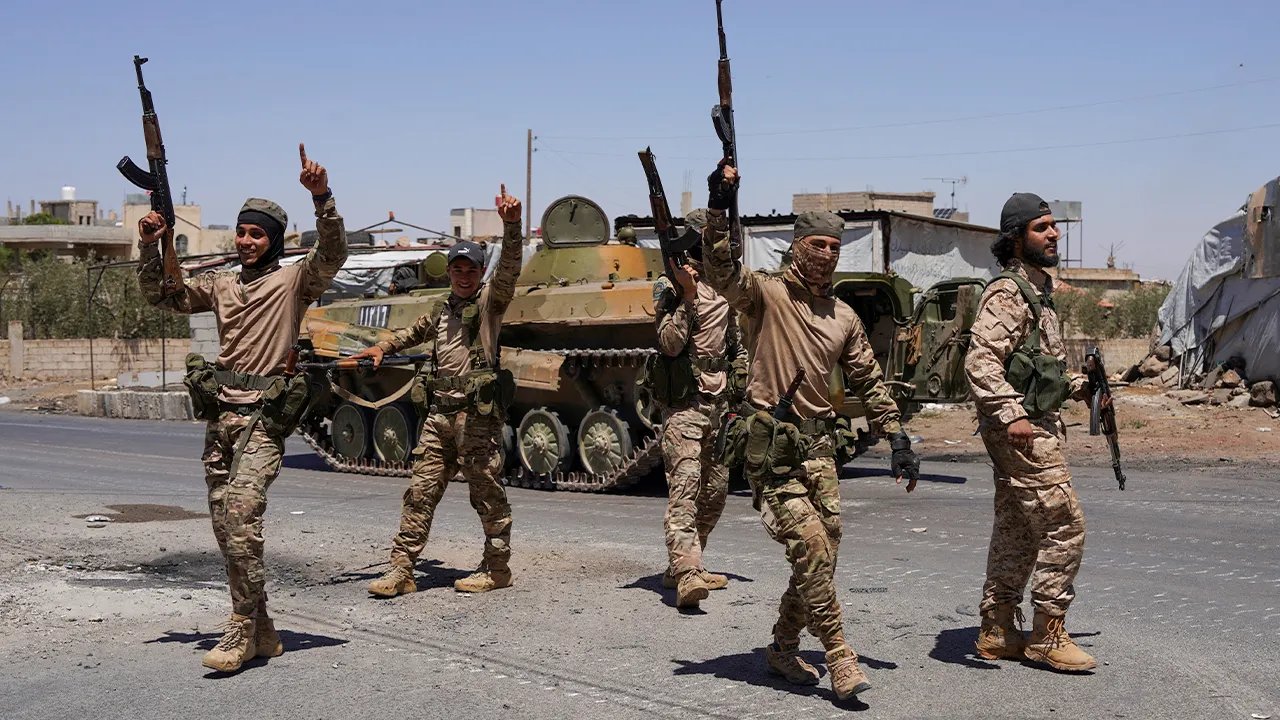
NEWYou can now listen to Fox News articles!
The International Fellowship of Christians and Jews swiftly mobilized its resources in July to aid persecuted Syrian Druze and Christians facing what some have called a genocide carried out by jihadists in southern Syria.
Syrian-backed forces, including jihadist fighters, launched attacks against Syrian Druze in the southern part of the country, resulting in the murders of at least 1,400 people, including a 35-year-old Syrian American from Oklahoma, Hosam Saraya, who was visiting family in Syria.
«Once we saw what was happening in Sweida, we could not turn a blind eye to it.» International Fellowship of Christians and Jews President and Global CEO Yael Eckstein told Fox News Digital.
WHO ARE THE DRUZE? RELIGIOUS GROUP AIDS SYRIAN MEMBERS UNDER ISLAMIST ATTACK, ISRAELI MEMBERS OFFER SUPPORT
Syrian security forces walk together along a street after clashes between Syrian government troops and local Druze fighters resumed in the southern Druze city of Sweida July 16, 2025. (Reuters/Karam al-Masri)
Her organization, she noted, had never operated in Syria prior to this year but said her organization «got an urgent call from a hospital from Sweida, and they needed basic medicines, surgical care, ICU medicine and equipment, first responder equipment and masks for morgue workers.»
The Fellowship coordinated with the Israel Defense Forces (IDF) to deliver medicine and equipment to Sweida. Eckstein said her group supplied «retired Israeli ambulances to Syria so the locals can operate them.»
The majority Druze city of Sweida was a focal point of the siege executed by Syrian Islamists loyal to new President Ahmed Al-Sharaa, a former member of U.S.-designated terrorist movements, al Qaeda and the Islamic State.
According to Christian Broadcasting Network, Christians were also targeted. Islamists reportedly murdered Khaled Mazhar, pastor of the Good Shepherd Evangelical Church in Sweida, along with 11 family members. An additional person survived the massacre of Christians because the Islamists thought she was dead.
WHO ARE THE DRUZE? RELIGIOUS GROUP AIDS SYRIAN MEMBERS UNDER ISLAMIST ATTACK, ISRAELI MEMBERS OFFER SUPPORT

The International Fellowship of Christians and Jews, Israel’s largest philanthropic group, sent aid to Syria’s Druze community amid persecution and attacks by Islamic militants. (The International Fellowship of Christians and Jews)
In July, Israel launched military strikes against the largely Bedouin forces on their way to the southern city of Sweida to stop the massacre. Israel also attacked the Syrian Defense headquarters in Damascus to halt the bloodshed in Sweida. Eckstein added that at least «26 Druze villages were fully burned.»
Since Fox News Digital’s interview with Eckstein, the Syrian Observatory for Human Rights reported at «least 30 villages were damaged by arson and destruction.»
Eckstein said the Fellowship first provided aid in Syria in April when Druze in Syria were targeted and killed.
«When we provided 1.500 food boxes to the Druze within 13 kilometers of Israel’s borders after the massacre in April, two days later Islamists burned boxes of the Fellowship,» Eckstein sid.
Israel and Syria do not have diplomatic relations. Syria is considered an enemy state because it has launched multiple wars against Israel since the rebirth of the Jewish state in 1948.
Eckstein said the Fellowship is «operating in enemy territory, and Jews and Christians are providing life-saving aid. Islamists don’t like it. We would like to see that it is in the Syrian government’s interests to receive aid and hope that more goodness will be brought to Syria.
«Now, Jewish people are standing with Christians who are being persecuted in Syria. It is really important to highlight that this is a case of good versus evil and is not just limited to Syria. It is important for Jews and Christians to stand together regarding Judeo-Christian values that sanctify life.»

The International Fellowship of Christians and Jews delivered aid to Druze, Christian and other minorities affected by recent attacks. Trucks entered through Israel’s border with Syria. (The International Fellowship of Christians and Jews)
TRUMP SIGNS ORDER LIFTING SANCTIONS ON SYRIA
Safwan Marich of the Israeli Druze community runs the Fellowship’s Emergency Response Center and told Fox News Digital that, in the Sweida region, «tyhere is a genocide going on. This needs no further explanation, especially for the Jewish people.
«Once the residents of the deserted village come back, they will understand the magnitude of disaster. Women were kidnapped by jihads, and children were kidnapped and missing.»
Marich has been in contact with his fellow Druze in Syria.
«This war is religious in essence,» he said. «There is a video of Daesh [Islamic State] going to one of the villages asking, ‘Are you a Druze or Sunni?’ And he answered that he is Syrian. He asked him again, so he answered Druze, and he was shot in the middle of the street. It is obvious there is a religious motivation behind this event.
«It is important for me to help the Druze because, first and foremost, I am a Druze. The Druze people are not aggressive and hostile, but they will not sit idly by when they are attacked. We have in the Druze tradition a commandment to help our brothers. To come to aid of Druze community wherever it might be in the world.
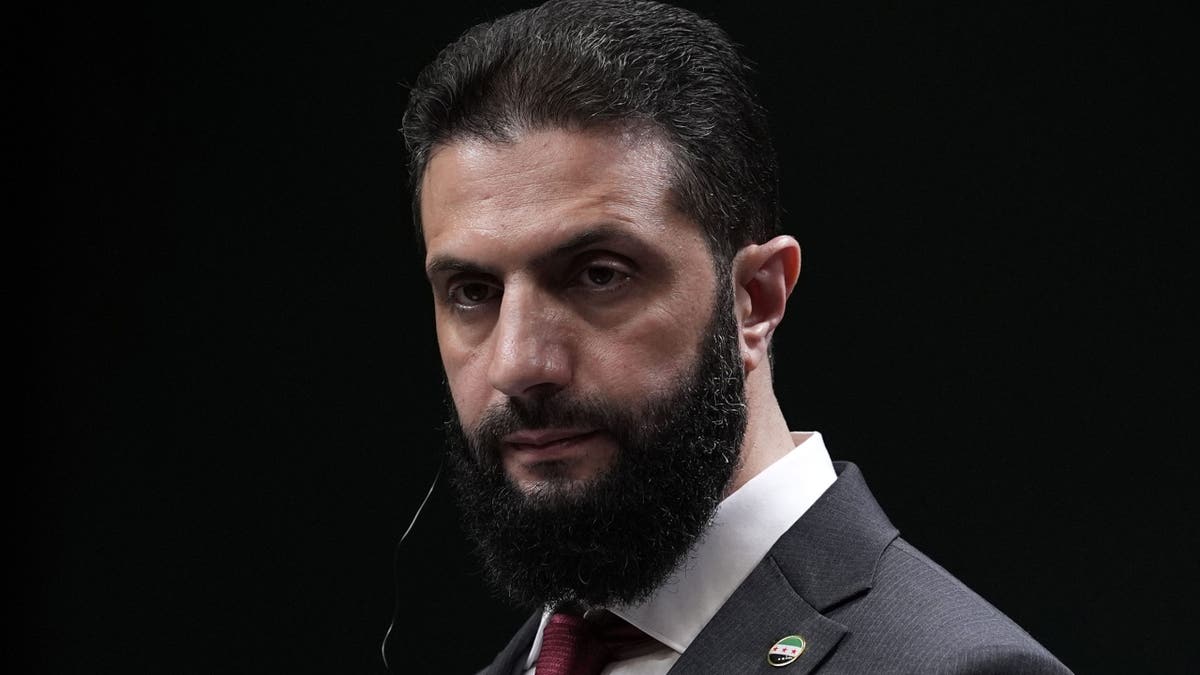
Turkish President Recep Tayyip Erdogan (not seen) and Syrian interim President Ahmed Al-Sharaa hold a press conference after their meeting at the Presidential Complex in Ankara, Turkey, Feb. 4, 2025. (Mehmet Ali Ozcan/Anadolu via Getty Images)
Marich also noted he is Israeli, and the other day a Druze officer was killed in Gaza. Twelve officers from the Druze community have been killed in Gaza since the war began.
CLICK HERE TO GET THE FOX NEWS APP
«They died defending Israel and the Jewish people. We have an expectation that Israeli society will come through and stand by Druze community, and so we can defend our brothers in Syria. The state of Israel cannot afford to have Daesh on its borders and in the Golan Heights.»
He pointed to the example of Hamas on the border and its growth as a military danger over the years as a warning about radical Islamists gaining a foothold on the Syrian-Israeli border.
syria,middle east,israel,conflicts,terrorism
INTERNACIONAL
Senate Democrats are feverishly recruiting top candidates to win back majority in 2026 midterms
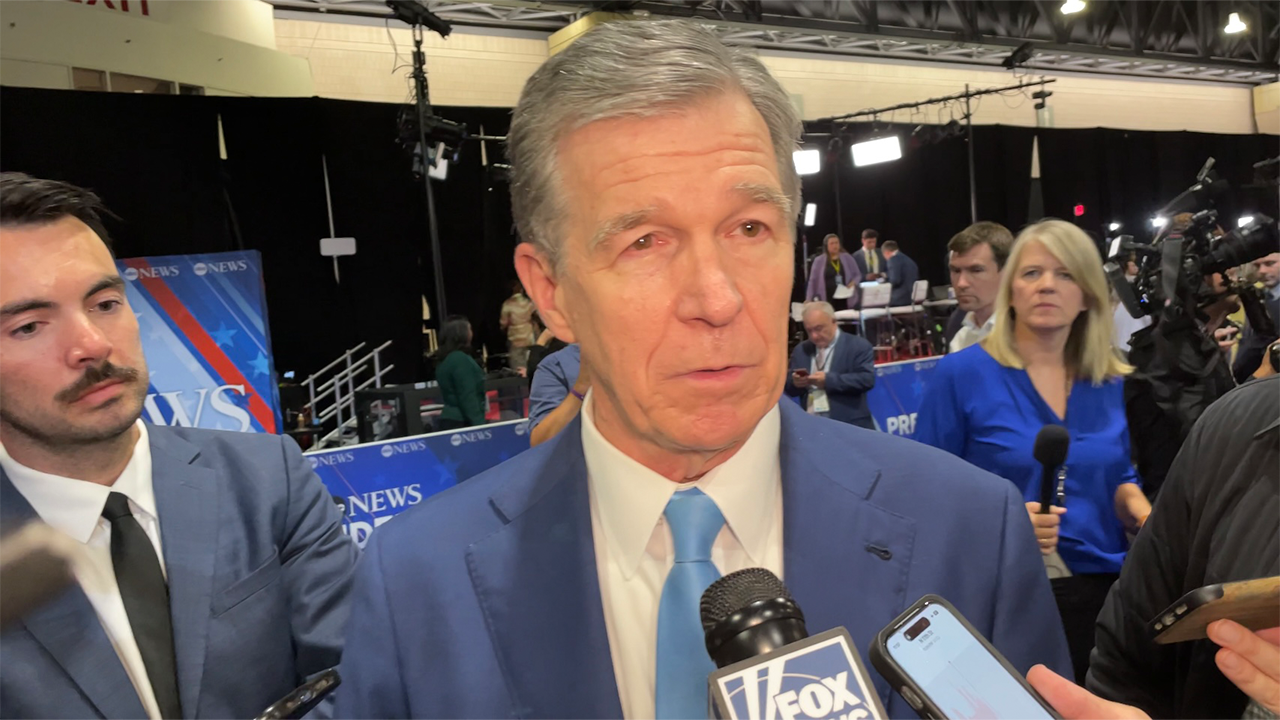
NEWYou can now listen to Fox News articles!
As they mount their uphill effort to win back the Senate majority in next year’s midterm elections, Democrats feel that they’re on a roll.
Late last month, they landed their biggest recruit to date, when former two-term Democratic Gov. Roy Cooper of North Carolina declared his candidacy in the 2026 race to succeed retiring Republican Sen. Thom Tillis.
Democrats view the open Senate seat in the crucial southeastern battleground state as a top pick-up opportunity next year as they try to win back control of the Senate, which the Republicans currently hold with a 53-47 majority.
«It’s hard to overstate the importance of getting Gov. Cooper to run for the Senate in North Carolina, and already we are seeing a potential for a ripple effect,» longtime Democratic strategist Chris Moyer told Fox News Digital.
THIS REPUBLICAN JUST JUMPED INTO BATTLEGROUND GEORGIA’S HIGH-PROFILE SENATE RACE
Then-Gov. Roy Cooper, a Democrat from North Carolina, speaks with reporters on Sept. 10, 2024, in Philadelphia, Pennsylvania. (Paul Steinhauser – Fox News )
Moyer, a veteran campaign communicator, said that Cooper recruitment is «giving more faith to potential candidates who are questioning whether there’s a chance for a Democratic majority in the Senate next year.»
Senate Minority Leader Chuck Schumer and Democratic Senatorial Campaign Committee (DSCC) Chair Sen. Kirsten Gillibrand, after landing Cooper, said he «is a formidable candidate who will flip North Carolina’s Senate seat.»
Top Democrats now have their eyes on former Sen. Sherrod Brown of Ohio, who lost last year’s re-election bid in a onetime top swing state that’s become reliably red over the past decade.
WHAT A TOP POLITICAL HANDICAPPER SAID ABOUT THE DEMOCRATS’ CHANCES TO WIN BACK SENATE IN 2026
Schumer, the top Democrat in the Senate, trekked to Ohio this summer in hopes of convincing Brown to take on Republican Sen. Jon Husted, Fox News confirmed.
Brown, who served over three decades in the House and later the Senate, is viewed by Democrats as the only candidate who could potentially topple Husted, who was named at the beginning of this year to fill the seat left vacant when then-Sen. JD Vance stepped down to become vice president.
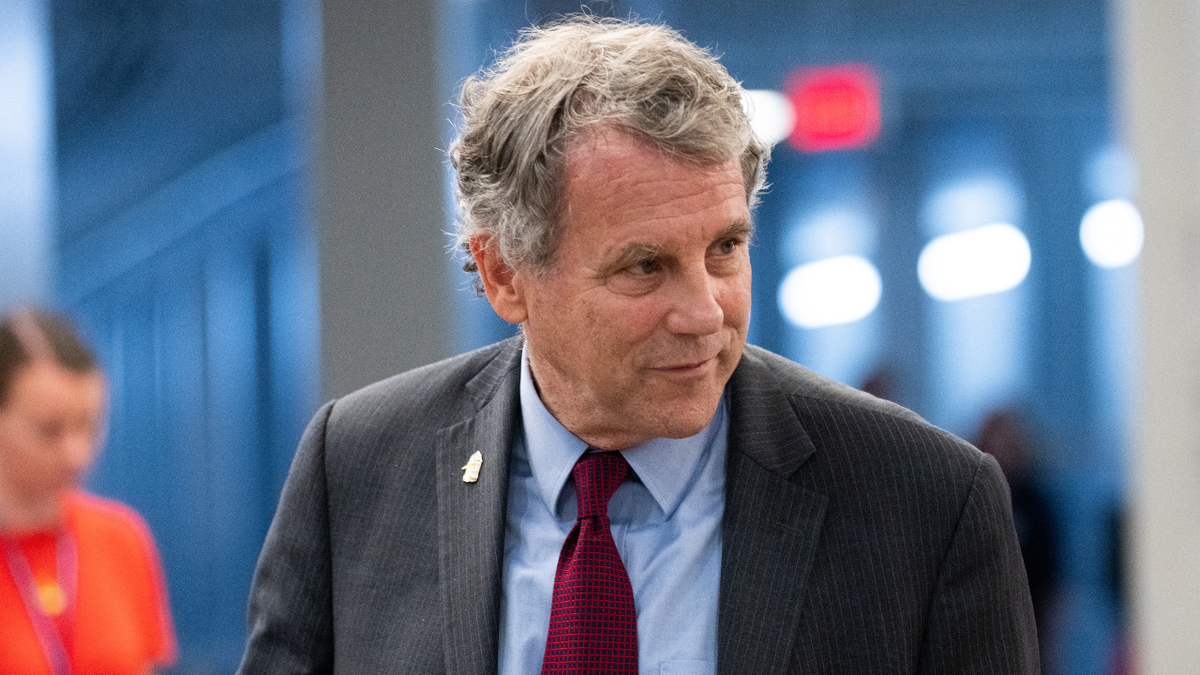
Former Democratic Sen. Sherrod Brown of Ohio is seriously considering a 2026 bid to return to the Senate. (Bill Clark/CQ-Roll Call, Inc via Getty Images)
Democrats landed the candidate they were hoping for in swing state New Hampshire in the race to succeed retiring longtime Democratic Sen. Jeanne Shaheen.
Four-term Rep. Chris Pappas’ announcement in early April that he would run to succeed Shaheen has cleared the Democratic primary field, as of now, of any potential rivals for the party’s Senate nomination.
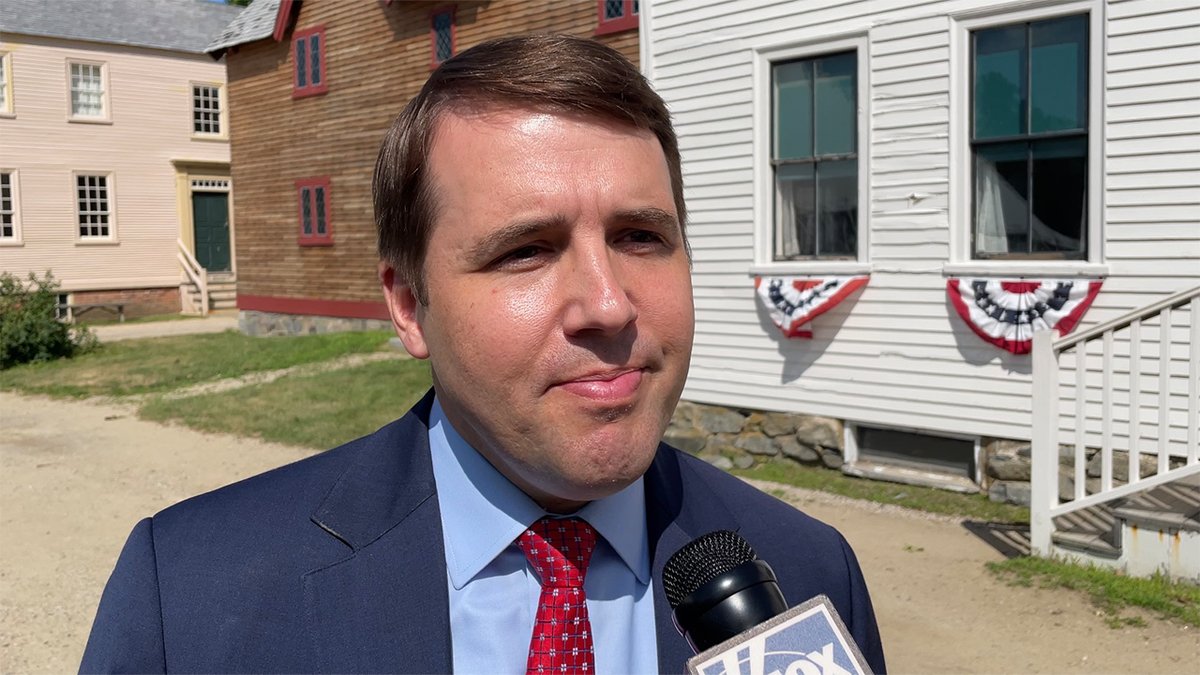
Democratic Senate candidate in New Hampshire Rep. Chris Pappas is interviewed by Fox News Digital on July 4, 2025, in Portsmouth, N.H. (Paul Steinhauser – Fox News)
Meanwhile, a Republican primary in the state – where the GOP hasn’t won a Senate race in 15 years – is heating up between former Sen. Scott Brown and state Sen. Dan Innis, with the possibility of more candidates entering the race.
In battleground Georgia, which President Donald Trump narrowly carried in last year’s White House race, Republicans view first-term Sen. Jon Ossoff as the most vulnerable Democrat incumbent up for re-election next year.
But Ossoff is off to a very hot fundraising start, and a GOP primary between Reps. Mike Collins and Buddy Carter, and former college and professional football coach Derek Dooley, is starting to turn combustible.
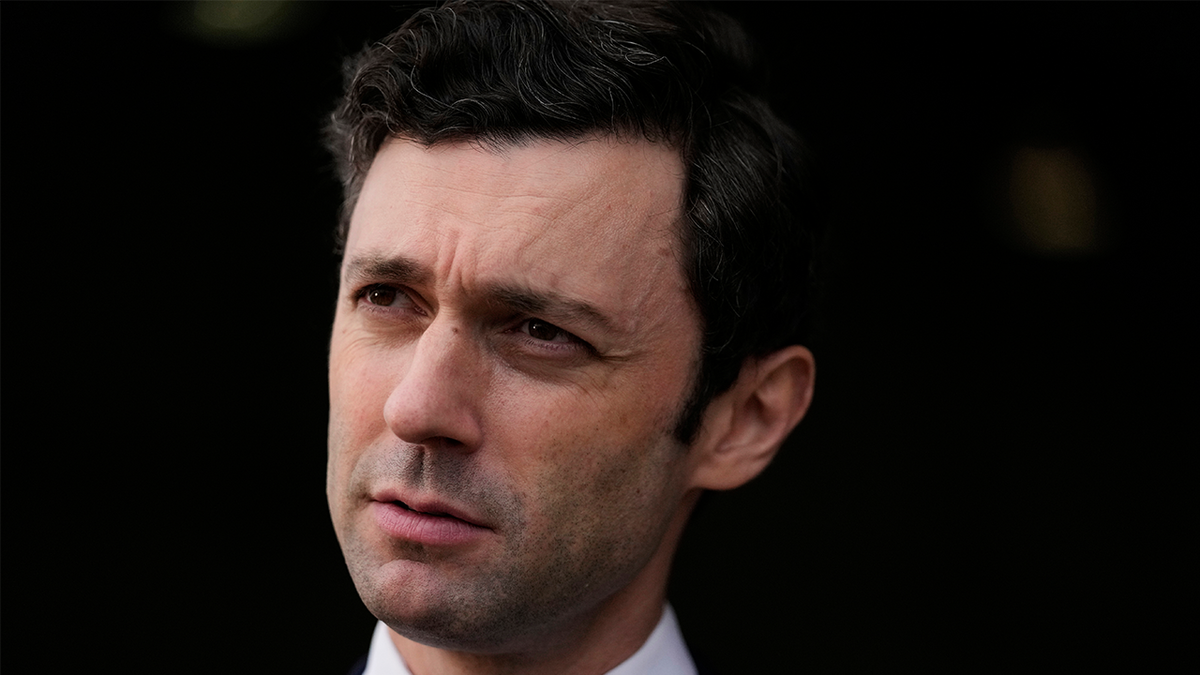
Republicans view Sen. Jon Ossoff as the most vulnerable Democrat running for re-election in the 2026 midterm elections. (AP)
Of potential concern for the Democrats is Michigan, where the dynamics appear to be the opposite of Georgia, in the race to succeed retiring Democratic Sen. Gary Peters.
Former Rep. Mike Rogers, the 2024 GOP Senate nominee who narrowly lost last year’s race, appears to have cleared the Republican, thanks in great part to Trump’s endorsement and likely arm twisting by the president’s political team.
Democrats, meanwhile, have a very competitive primary on their hands. The primary race includes three well-known Democrats: Rep. Haley Stevens, state Sen. Mallory McMorrow, and former gubernatorial candidate Abdul El-Sayed, who enjoys the backing of progressive champion Sen. Bernie Sanders of Vermont.
And popular Detroit Mayor Mike Duggan is running for the Senate as an independent, which could potentially hurt Democrats in the general election.
While Texas has long been a reliable red state, and conservative firebrand Sen. Ted Cruz comfortably won re-election last year, Democrats are optimistic about their 2026 chances to potentially flip a red seat to blue.
That’s because longtime GOP Sen. John Cornyn is facing a serious primary challenge from Texas Attorney General Ken Paxton, a MAGA world rockstar.
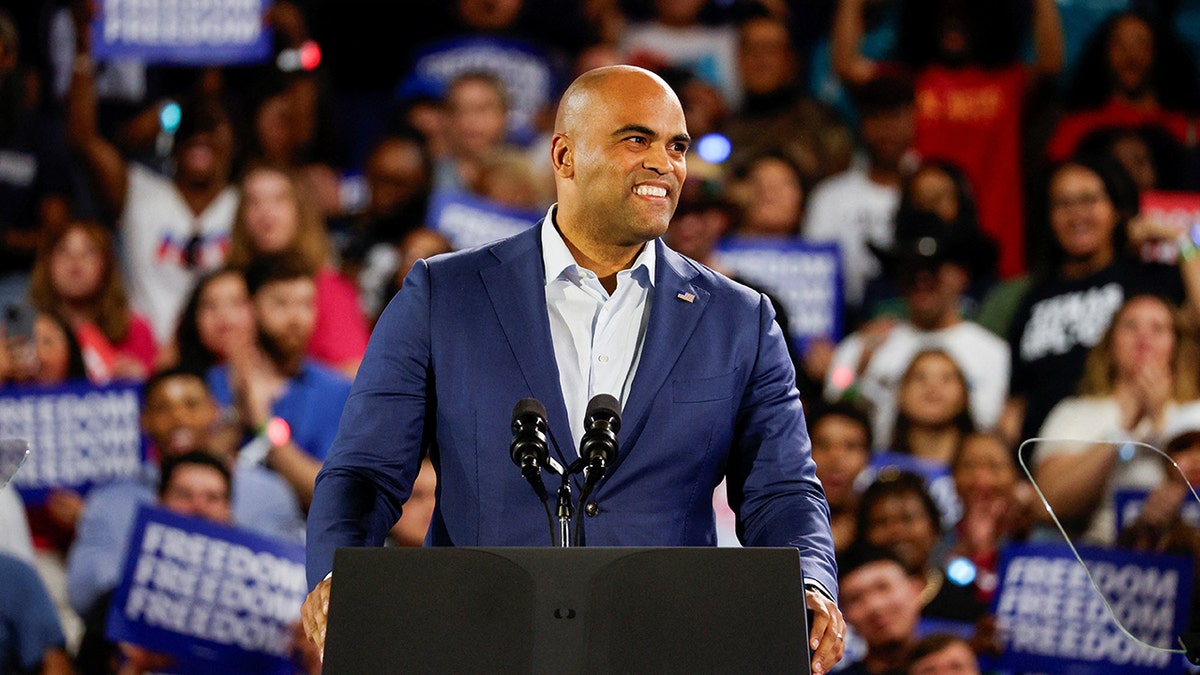
Former Rep. Colin Allred of Texas, seen on the campaign trail last October, is running for a second straight election cycle for the Senate. (Reuters/Marco Bello)
Paxton has long been surrounded by scandals, and is now dealing with a headline-grabbing divorce with his wife, state Sen. Angela Paxtom. And Democrats believe if Paxton topples Cornyn in next March’s GOP primary, he’ll be toxic in the general election.
But Democrats could have a competitive primary in Texas as well.
Former Rep. Colin Allred, who lost to Cruz last November, launched a second straight campaign earlier this year.
Former Rep. Beto O’Rourke, who came close to ousting Cruz in the state’s 20218 Senate election before unsuccessfully running for the 2020 Democratic presidential nomination and losing the 2022 Texas gubernatorial race to GOP Gov. Greg Abbott, is taking a hard look at a 2026 Senate run.
State Rep. James Talarico, who grabbed national attention recently for his appearance with popular podcaster Joe Rogan, and Rep. Joaquin Castro, are also mulling bids.
CLICK HERE TO GET THE FOX NEWS APP
Democrats also feel they may have a shot in Iowa – a onetime swing state that’s become firmly red in recent election cycles – if Republican Sen. Joni Ernst decides against seeking a third term in the Senate.
But they’ll likely have a much better chance of flipping a GOP-held seat in blue state Maine if longtime Republican incumbent Sen. Susan Collins decides against seeking re-election.
democrats senate,senate,midterm elections,elections,donald trump,democratic party,republicans elections
INTERNACIONAL
Witkoff meets with Putin over war in Ukraine, no ceasefire agreements announced

NEWYou can now listen to Fox News articles!
White House envoy Steve Witkoff landed in Russia on Wednesday for his fifth visit with Russian President Vladimir Putin as President Donald Trump looks to force a peace deal and bring an end to the three-and-a-half-year war in Ukraine.
Little seems to have been accomplished from the three-hour meeting in the way of securing a peace deal, or even circumventing the threatened sanctions by Trump that Putin now stares down, though according to Russian foreign policy advisor Yuri Ushakov, the meeting was described as «useful and constructive.»
Ushakov said Putin «received some signals from Trump» and «sent some signals,» but he did not elaborate on any specifics.
Russian President Vladimir Putin (L) meets with US President’s Special Envoy Steve Witkoff (R) at Kremlin Palace in Moscow, Russia on August 6, 2025. (Kremlin Press Office / Handout/Anadolu via Getty Images)
WITKOFF SCRAMBLES FOR PEACE DEAL WITH RUSSIA AS SANCTIONS LOOM TARGETING INDIA, CHINA
The advisor also told reporters that Putin and Witkoff had discussed developing the «strategic partnership» between the U.S. and Russia but did not elaborate how. The comment came after Witkoff was spotted earlier in the day taking a walk near the Kremlin with Kirill Dmitriev, the Russian president’s envoy for investment and economic cooperation.
Witkoff and Putin met shortly before noon in Moscow, according to the timestamp released by the Kremlin which accompanied an image of Putin and Witkoff smiling and shaking hands as Russian foreign policy advisor Yuri Ushakov looked on.
Witkoff’s team did not respond to Fox News Digital’s questions on what the envoy was hoping to accomplish in his meeting with Putin, though some reporting this week suggested he may look to secure a moratorium on air strikes.
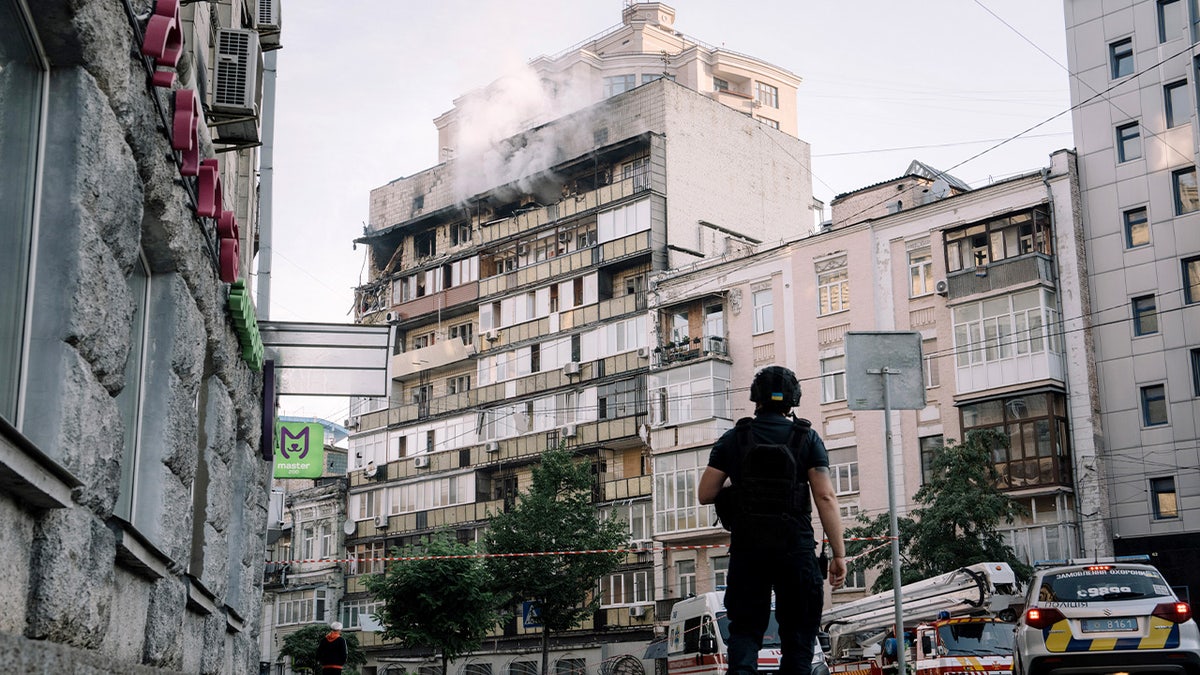
A police officer at the site of a Russian air strike that hit a residential building in Kyiv, Ukraine, on Thursday, July 10, 2025. (Andrew Kravchenko/Bloomberg via Getty Images)
Witkoff traveled to Moscow in a last-ditch effort to get Putin to capitulate to Trump’s and Western calls for an end to the war, though the Kremlin chief was not expected to make great concessions in ending his war ambitions ahead of the trip.
In mid-July, while seated next to NATO Secretary General Mark Rutte, Trump promised to enforce «very severe» tariffs on Russia if Putin does not enter into a deal with Ukrainian President Volodymyr Zelenskyy within 50 days.
«Tariffs at about 100%, you’d call them secondary tariffs,» he had said, implying that nations who trade with Russia will see 100% tariffs slapped on them when trading with the U.S.
He then pushed the date up to within 10 days of July 29, forcing the new deadline for Friday.
But on Tuesday Trump walked back his 100% tariff threat amid tough trade talks with India and China, and said, «I never said a percentage.»
«We’ll see what happens over the next fairly short period of time,» he added in response to questions from reporters. «We have a meeting with Russia tomorrow. We’re going to see what happens.
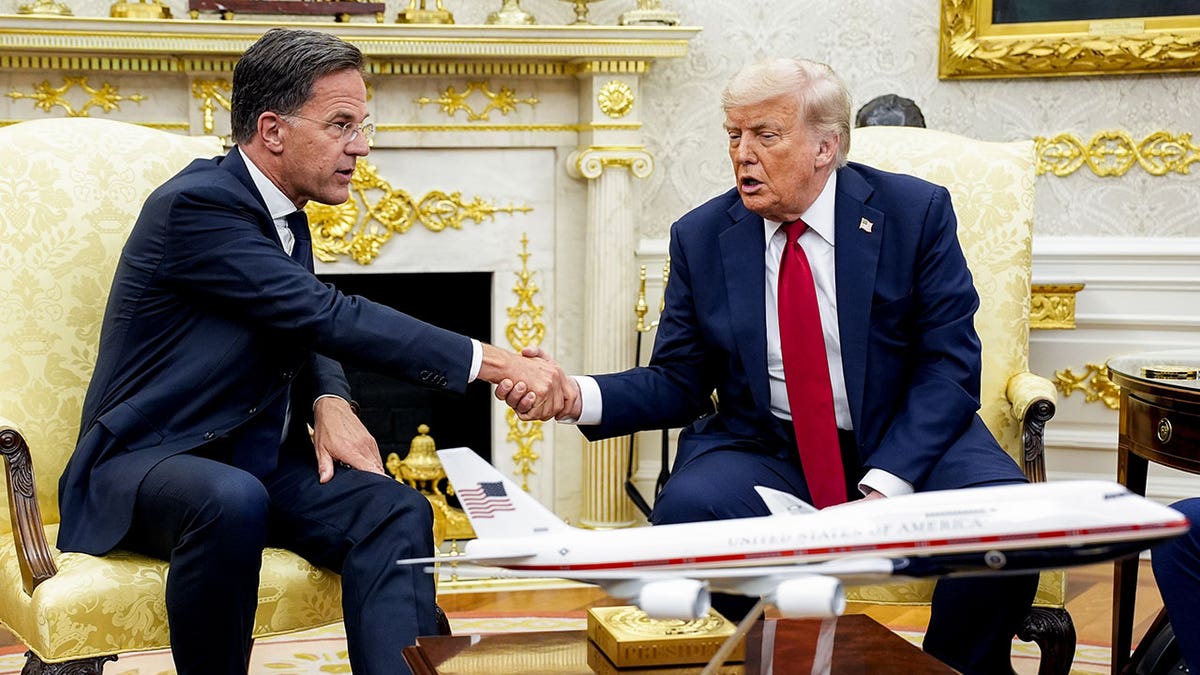
President Donald Trump, right, and Mark Rutte, secretary general of the North Atlantic Treaty Organization (NATO), shake hands during a meeting in the Oval Office of the White House in Washington, D.C., on Monday, July 14, 2025. (Yuri Gripas/Abaca/Bloomberg via Getty Images)
CLICK HERE TO GET THE FOX NEWS APP
«We’ll make that determination at that time,» he added.
The tariffs would most drastically target China and India, which are the largest purchasers of Russian oil, though high tariffs on those nations, both of which are major traders with the U.S., would also mean higher prices for the American consumer.
russia,vladimir putin,ukraine,donald trump,world
INTERNACIONAL
Italia aprobó la construcción del puente colgante más largo del mundo sobre el estrecho de Mesina
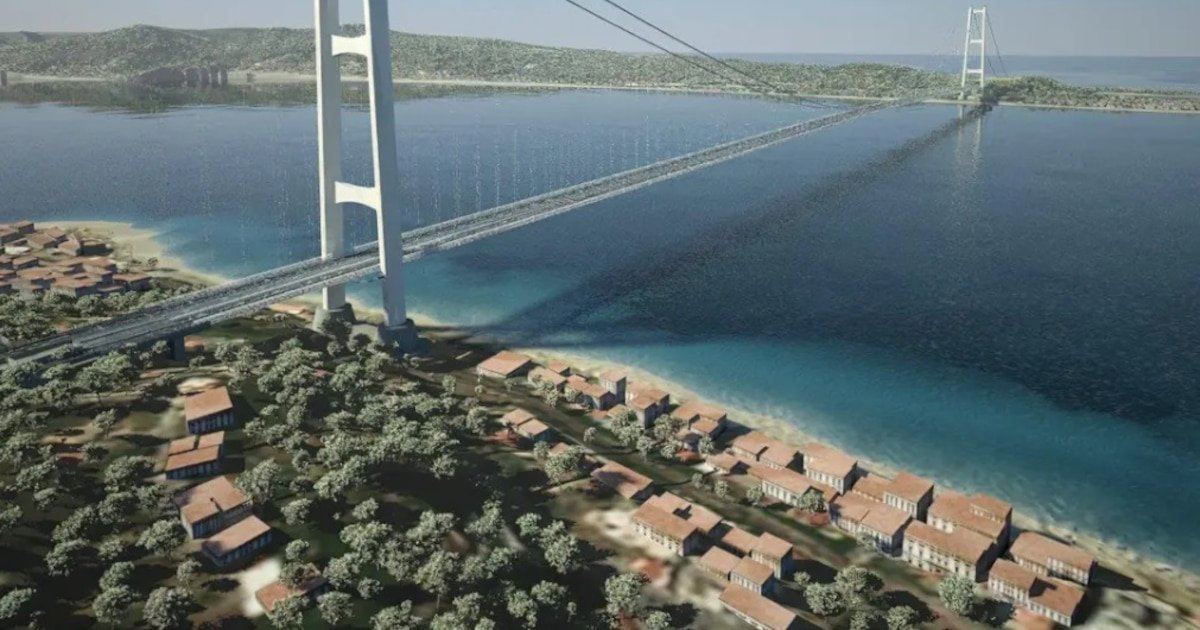
El gobierno italiano aprobó este miércoles el proyecto definitivo para la construcción del puente sobre el estrecho de Mesina, una obra faraónica de 13.532 millones de euros que unirá por primera vez la península italiana con la isla de Sicilia mediante lo que será el puente colgante más largo del mundo.
El visto bueno fue otorgado por el Comité Interministerial para la Planificación Económica y el Desarrollo Sostenible (Cipess), tras evaluar la documentación técnica y financiera presentada por el Ministerio de Infraestructuras y Transportes y las empresas involucradas en el proyecto.
El ministro de Infraestructuras y viceprimer ministro, Matteo Salvini, anunció en rueda de prensa que espera “iniciar las obras, los trabajos y las expropiaciones entre septiembre y octubre”, una vez que el Tribunal de Cuentas otorgue su aprobación final. Salvini describió el proyecto como una “obra sin precedentes en el mundo” y un “proyecto de ingeniería fascinante” que acelerará el desarrollo económico del sur de Italia.

La estructura que unirá la isla con la península será el puente colgante más largo del mundo, con un vano central de 3.300 metros. Estará sostenido por dos torres de 399 metros de altura, situadas en las costas de Calabria y Sicilia, unidas por cuatro cables de suspensión.
El puente contará con tres carriles de carretera por sentido, dos carriles de servicio y dos vías ferroviarias en el centro. El tablero tendrá 60,4 metros de ancho y una altura de 72 metros sobre el nivel del mar para permitir el paso de embarcaciones de gran calado.

Según las estimaciones oficiales, una vez completado entre 2032 y 2033, el puente tendrá una capacidad máxima de hasta 6.000 vehículos por hora y 200 trenes al día, reduciendo dramáticamente el tiempo de viaje entre Calabria y Sicilia de las actuales dos o tres horas en ferry a apenas 15 minutos por carretera y 10 minutos en tren.

La construcción del puente que una la región de Calabria con la ciudad de Messina es una idea que se estudia desde 1971. El ex primer ministro Silvio Berlusconi relanzó el proyecto durante su segundo gobierno (2001-2006) como uno de sus grandes sueños, aunque nunca llegó a colocarse la primera piedra.
Los intentos por construir un puente sobre el estrecho de Mesina se remontan incluso a tiempos antiguos. Según el cronista romano Plinio el Viejo, en el año 252 a.C. un cónsul logró trasladar 100 elefantes de guerra capturados desde Sicilia hasta la península italiana utilizando balsas hechas de “filas de barriles atados”.
En 2005, Berlusconi otorgó el primer contrato de 3.900 millones de euros para el puente, pero fue archivado meses después cuando cayó su gobierno. Al regresar al poder dos años más tarde, intentó revivir el proyecto, pero fue cancelado nuevamente en 2011 durante la crisis de deuda soberana europea.
Los costos han aumentado significativamente: de 4.400 millones de euros estimados hace dos décadas a los actuales 13.500 millones.

El gobierno de Giorgia Meloni ha reenmarcado el proyecto no solo como una obra de desarrollo económico, sino como una infraestructura estratégica crucial para la seguridad nacional. Italia ha comprometido aumentar su gasto en defensa al 5% del PIB dentro de una década como parte de sus compromisos con la OTAN, destinando 1,5% del PIB a infraestructuras estratégicas.
“El puente del estrecho de Mesina constituye una infraestructura fundamental con respecto a la movilidad militar, teniendo en cuenta la presencia de importantes bases de la OTAN en el sur de Italia”, señalaron las autoridades italianas en un informe de abril.
Sin embargo, expertos como Alessandro Marrone del Instituto de Asuntos Internacionales de Roma cuestionan esta justificación, argumentando que la prioridad de la OTAN es facilitar el despliegue rápido de tropas hacia el este europeo en caso de ataque ruso.
Marrone dijo al Financial Times que Italia debía centrarse en mejorar los puertos, aeropuertos y carreteras de las regiones donde están estacionadas sus tropas: “Si hay que ir al este, hay que hacerlo por el Adriático, en avión o por los Alpes”.
Se espera que el proyecto movilice más de 23.000 millones de euros en inversiones totales y genere aproximadamente 120.000 puestos de trabajo durante su ejecución. El consorcio Eurolink, liderado por la empresa italiana Webuild y que incluye la participación de 235 compañías —entre ellas la española Sacyr con un 22,4% de participación—, además de empresas japonesas y danesas, se adjudicó la obra.

Sin embargo, el proyecto enfrenta resistencias. Diversas asociaciones ciudadanas y medioambientales han denunciado los posibles daños al ecosistema marino del estrecho de Mesina y alertan sobre el riesgo de infiltración de mafias locales, como la ‘Ndrangheta en Calabria y Cosa Nostra en Sicilia.
La Dirección de Investigación Antimafia ha advertido en varias ocasiones sobre estos peligros, por lo que no se descarta que se presenten denuncias legales contra el proyecto.
Los residentes de Messina también se han movilizado para intentar detener el proyecto, que requerirá cambios masivos en la ciudad, incluyendo la reubicación de la estación de tren y demoliciones de algunos barrios.
A pesar de las controversias, el gobierno describió el puente como “infraestructura estratégica” y de “interés nacional” para completar las redes transeuropeas de transporte, con lo que describe como un “acelerador del desarrollo” para dos de las regiones más pobres de Italia.

 SOCIEDAD2 días ago
SOCIEDAD2 días agoHay alerta amarilla por tormentas y frío extremo para este lunes 4 de agosto: las provincias afectadas

 POLITICA2 días ago
POLITICA2 días agoMilei afirmó que la elección en la provincia de Buenos Aires “podría significar el fin del kirchnerismo”

 POLITICA2 días ago
POLITICA2 días agoMartín Menem se refirió al escándalo de Tech Security que involucra a su familia: “Nos quieren meter a todos en la misma bolsa”




































